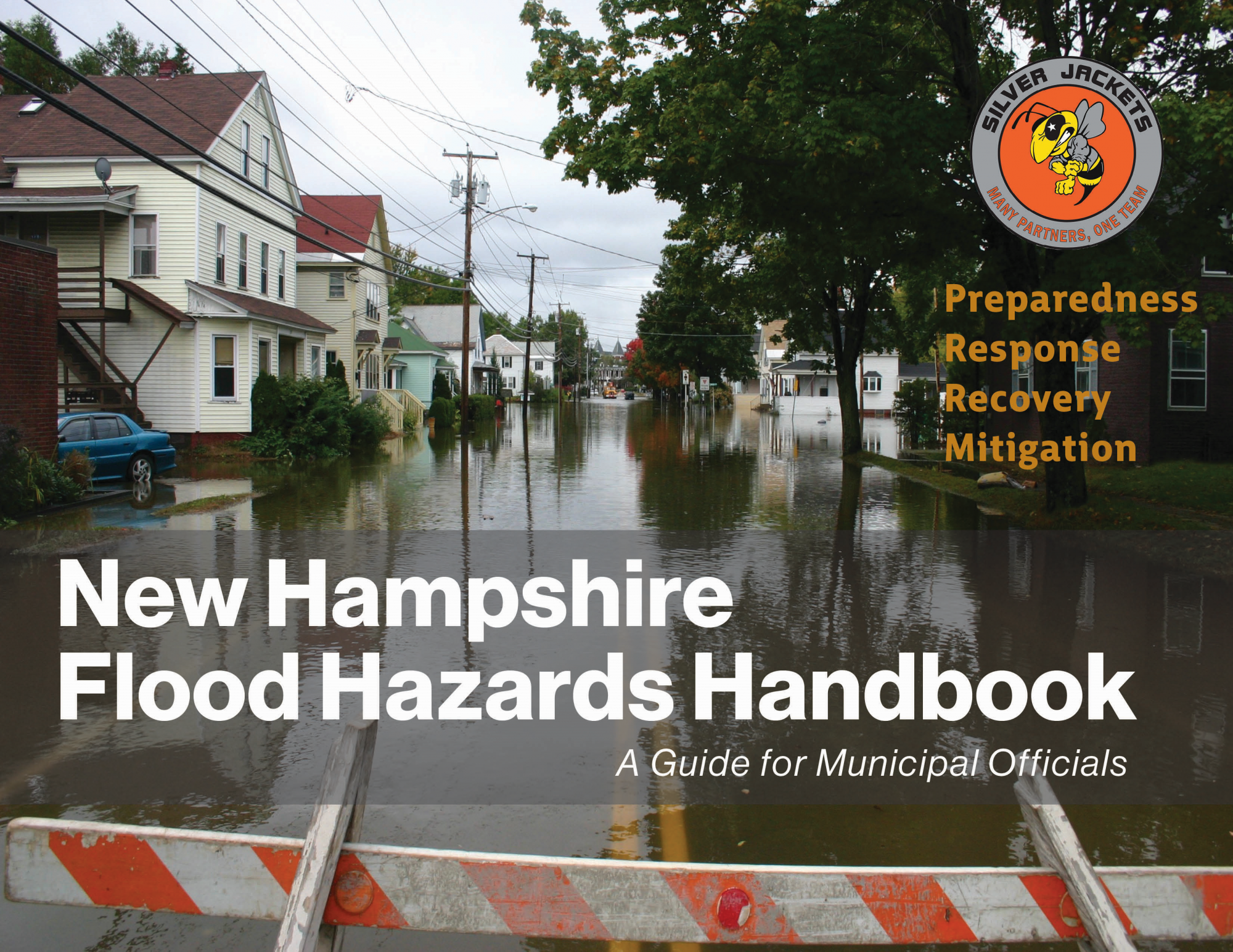The information contained in this article is not intended as legal advice and may no longer be accurate due to changes in the law. Consult NHMA's legal services or your municipal attorney.
In New Hampshire, the most common and costly type of disaster we experience by far is flooding. Factor in the impacts of climate change that we are now beginning to see, including sea level rise and more extreme and unpredictable weather events, and it is clear: flood risk is a serious threat to the wellbeing of our communities that must be faced and effectively managed.
Floods can impact many aspects of a community – its residents, businesses, and infrastructure, its municipal staff’s duties and work load, its desirability as a place to live, work, and visit, and its overall economic and social health. Taking steps to manage flood risk can mean reducing potential:
- loss of human life
- property damage
- environmental damage
- displacement of residents
- disruption of businesses
- burden on community infrastructure, services and staff
How does a community successfully manage flood risk? Its existing resources – i.e., staff, plans and preparations, regulations and compliance procedures, and equipment and supplies serve as the first line of defense in keeping people, property, and infrastructure safe from floods. However, guidance and other forms of assistance are also available from federal and state agencies that can bolster a community’s resources as needed.
This September the New Hampshire Silver Jackets Team (see box), a state-led group that brings together state and federal agencies to focus on flood risk management issues that affect local communities, will release the Flood Hazards Handbook for Municipal Officials. This new guide was developed as a resource to help communities prepare for, respond to, and recover from floods. It also includes guidance on ways to reduce (or mitigate) flood risk to lessen impacts from future events.
The Flood Hazards Handbook was designed to be used by municipal officials in “peace time” before a flood threat and also during and after a flood event. It provides guidance and best practices, and information about available federal and state resources, organized into situation-specific sections: Before the Flood, During the Flood, and After the Flood (Short Term Recovery and Long Term Recovery Considerations).
Topics covered in the handbook include, but are not limited to, the following:
- Identifying local flood risks, including added risk factors such as dams, ice jams, and climate change
- Planning activities to increase preparedness and reduce flood risk
- FEMA hazard mitigation assistance grants
- Data sources that can help communities improve their flood awareness
- Evacuation and sheltering guidance
- Post-disaster cleanup, debris removal, and permitting
- Post-flood requirements for communities that participate in the National Flood Insurance Program
- FEMA post-disaster assistance and other potential sources of assistance for communities, businesses, and residents
- Flood mitigation resources for communities and residents to increase resilience to future floods
- Public outreach guidance, including key topics to communicate to residents before, during, and after a flood
Also included with the handbook are the Flood Response and Recovery Checklist which can be used by municipal officials to identify and manage priority activities when a flood event does happen and an Agency Contact List for more information about specific topics covered.
Unfortunately, when it comes to flooding, there will always be a “next time.” However, through careful planning and by taking other proactive steps, flood risk can be effectively managed to keep your community safe and secure. Download a copy of the Flood Hazards Handbook today and learn how it can help your community work towards a more flood-resilient future.
Download the New Hampshire Flood Hazards Handbook:
The Flood Hazards Handbook will be available for download through the New Hampshire Silver Jackets Team website (https://silverjackets.nfrmp.us/State-Teams/New-Hampshire.cfm) this September.
Get the Latest Floodplain Management News in New Hampshire:
The New Hampshire Office of Strategic Initiatives’s quarterly Flood Lines newsletter provides the latest information about flood risk management and the National Flood Insurance Program within the state. To sign up for the newsletter, contact Samara Ebinger at samara.ebinger@osi.nh.gov or 603-271-1755.
What is the New Hampshire Silver Jackets Team?
The New Hampshire Silver Jackets, a state-led team formed in 2015, brings together state and federal agencies to focus on flood risk management issues that affect local communities. The team includes representatives from over 15 agencies and programs, including state agencies such as the Department of Environmental Services, Homeland Security & Emergency Management, Fish & Game Department, and Office of Strategic Initiatives, and federal agencies such as the U.S. Army Corps of Engineers, New England District; Federal Emergency Management Agency, Region 1 office; and the National Weather Service, Gray, Maine office. Team goals include:
- Advising and assisting New Hampshire communities in their efforts to become more resilient and less vulnerable to flood hazards.
- Increasing public awareness and understanding of flood risk and mitigation through the sharing and delivery of resources to New Hampshire communities.
- Assisting with the prioritization of risk management tasks during flood events.
To learn more about the New Hampshire Silver Jackets team including information about other recent team projects, visit their website at https://silverjackets.nfrmp.us/State-Teams/New-Hampshire.cfm, or contact Jennifer Gilbert, Senior Planner at the New Hampshire Office of Strategic Initiatives and New Hampshire Silver Jackets team Co-Vice Chair at jennifer.gilbert@osi.nh.gov.
Samara Ebinger is Principal Planner with the New Hampshire Office of Strategic Initiatives. Samara can be reached by phone at 603.271.1755 or by email at samara.ebinger@osi.nh.gov.
